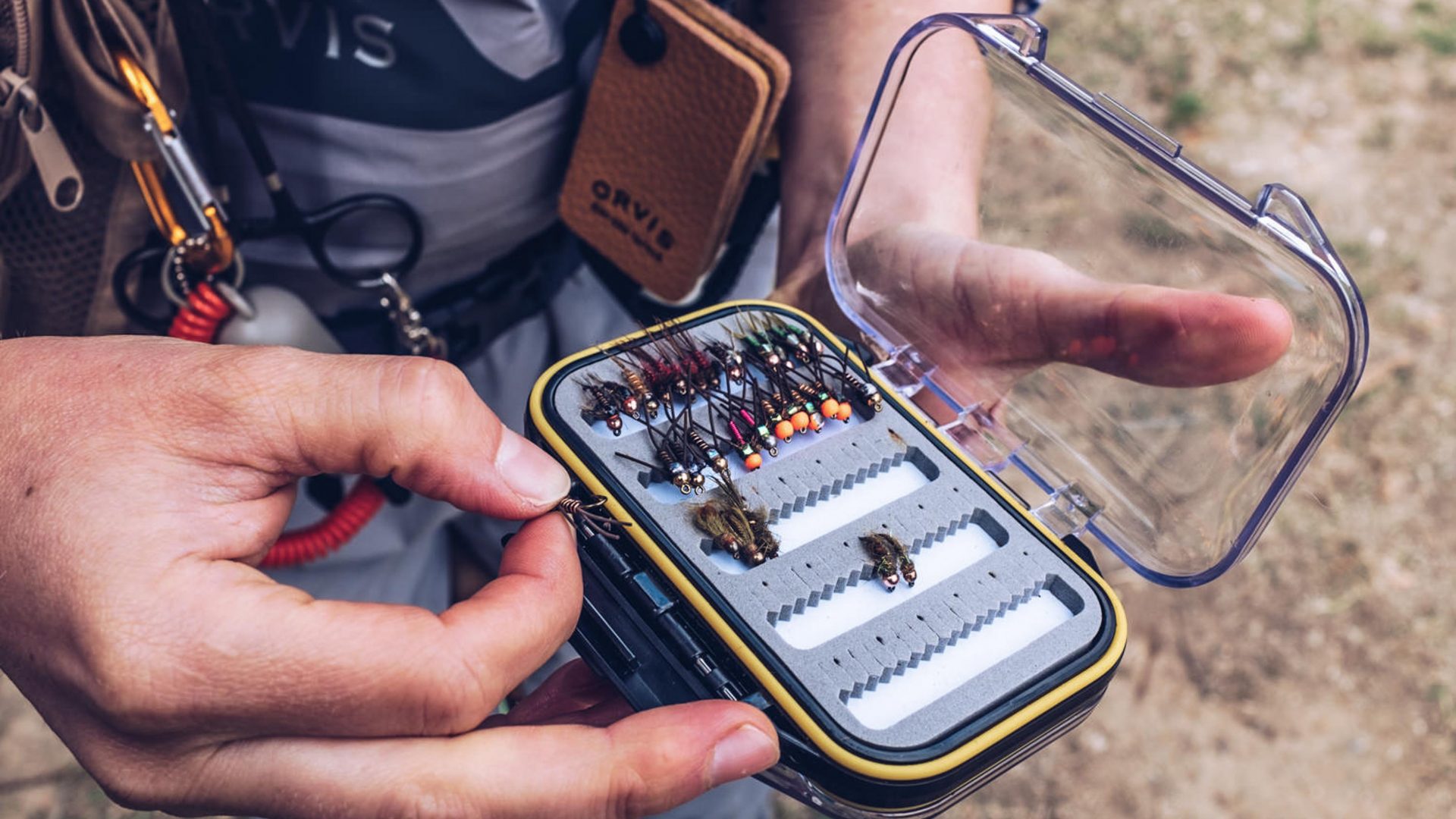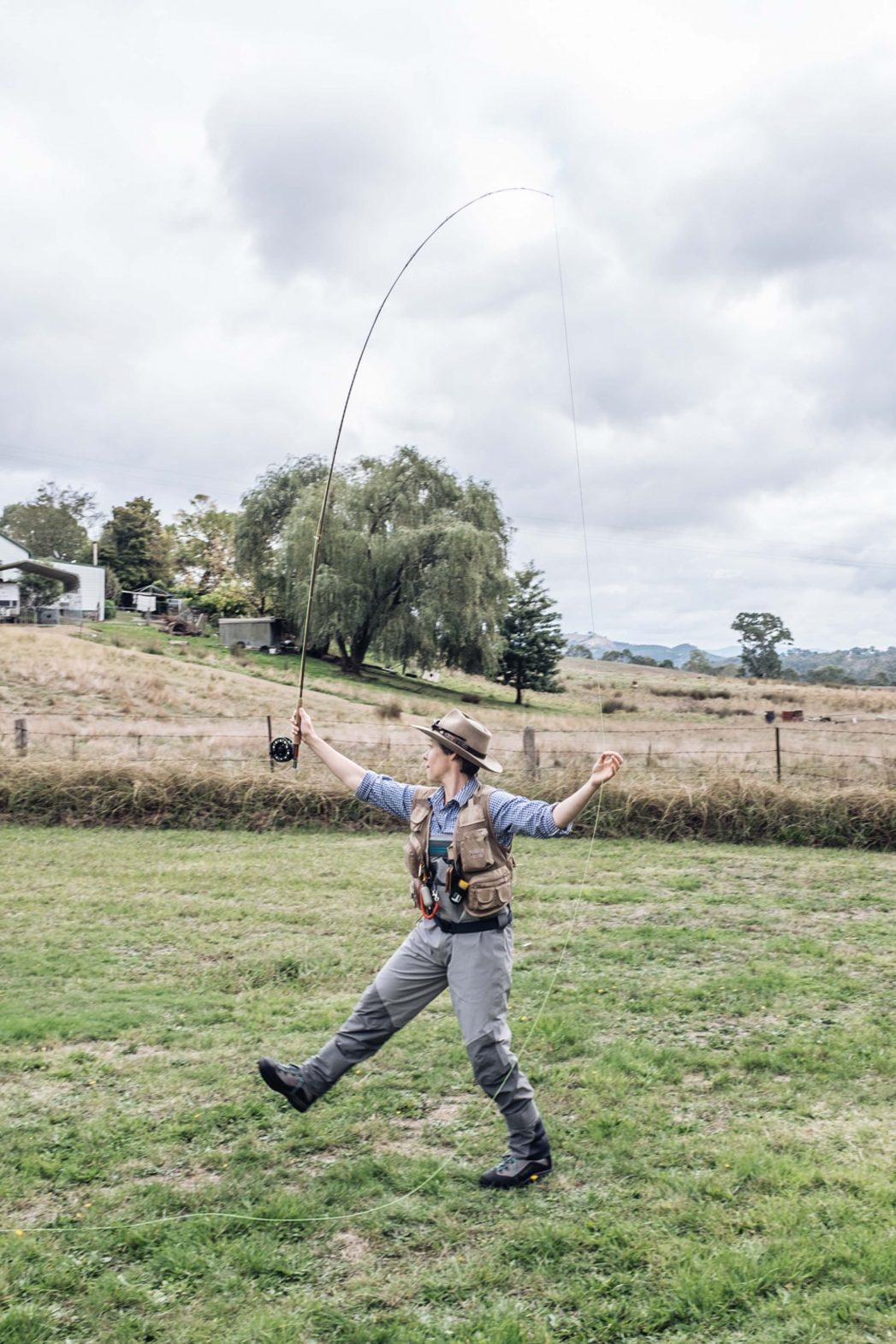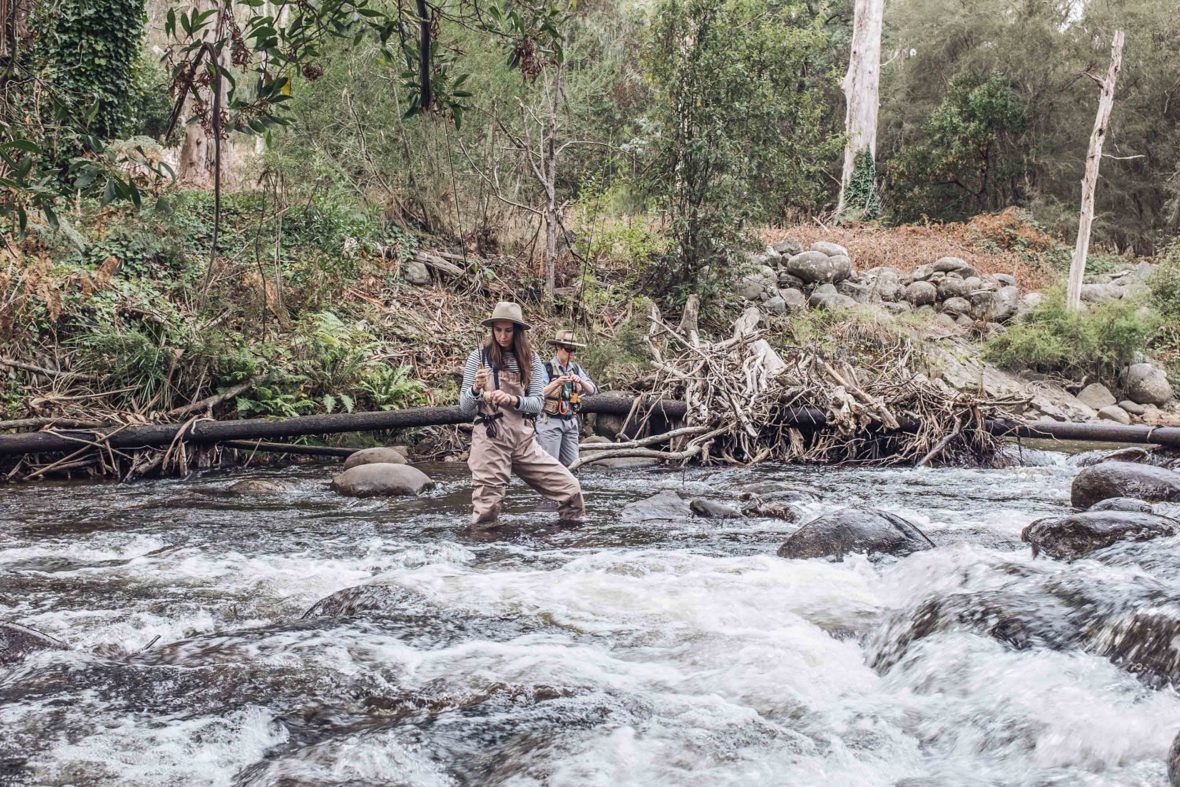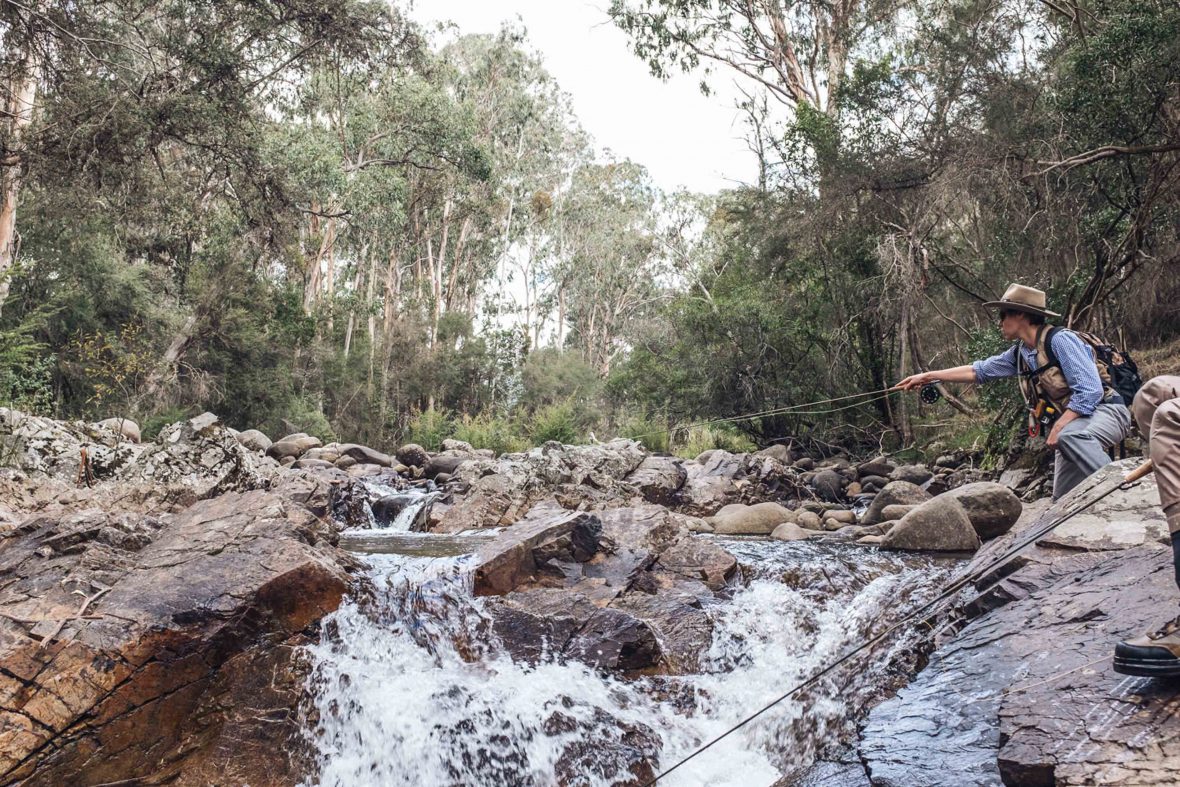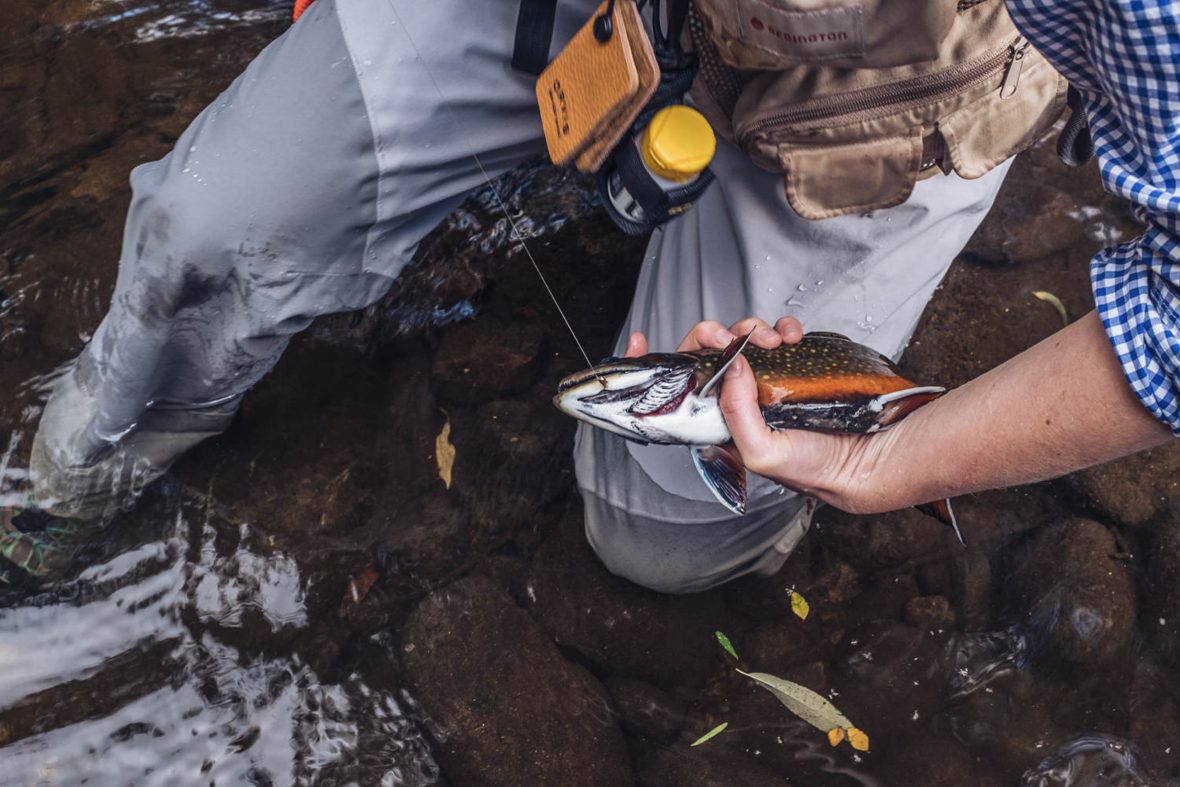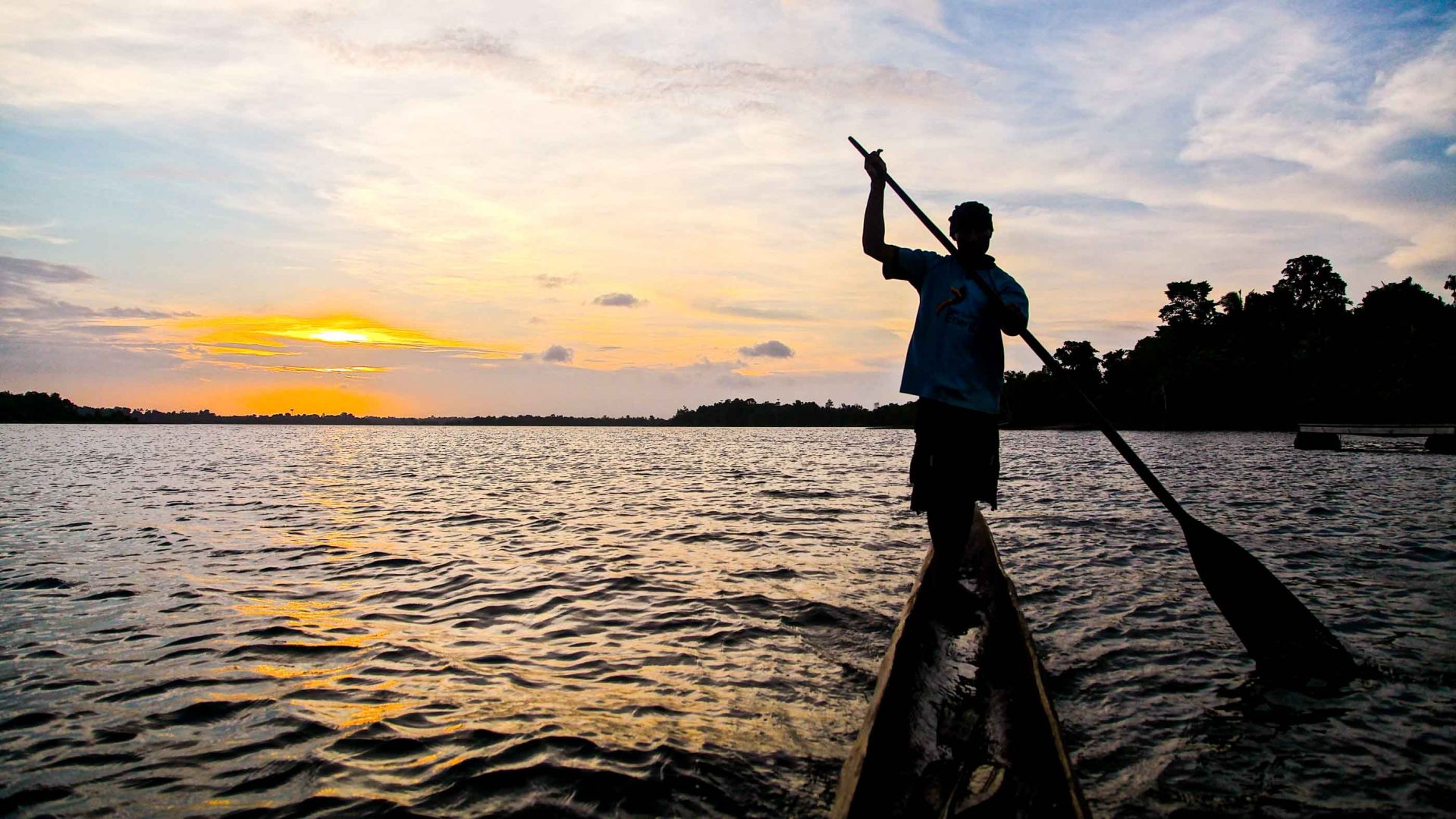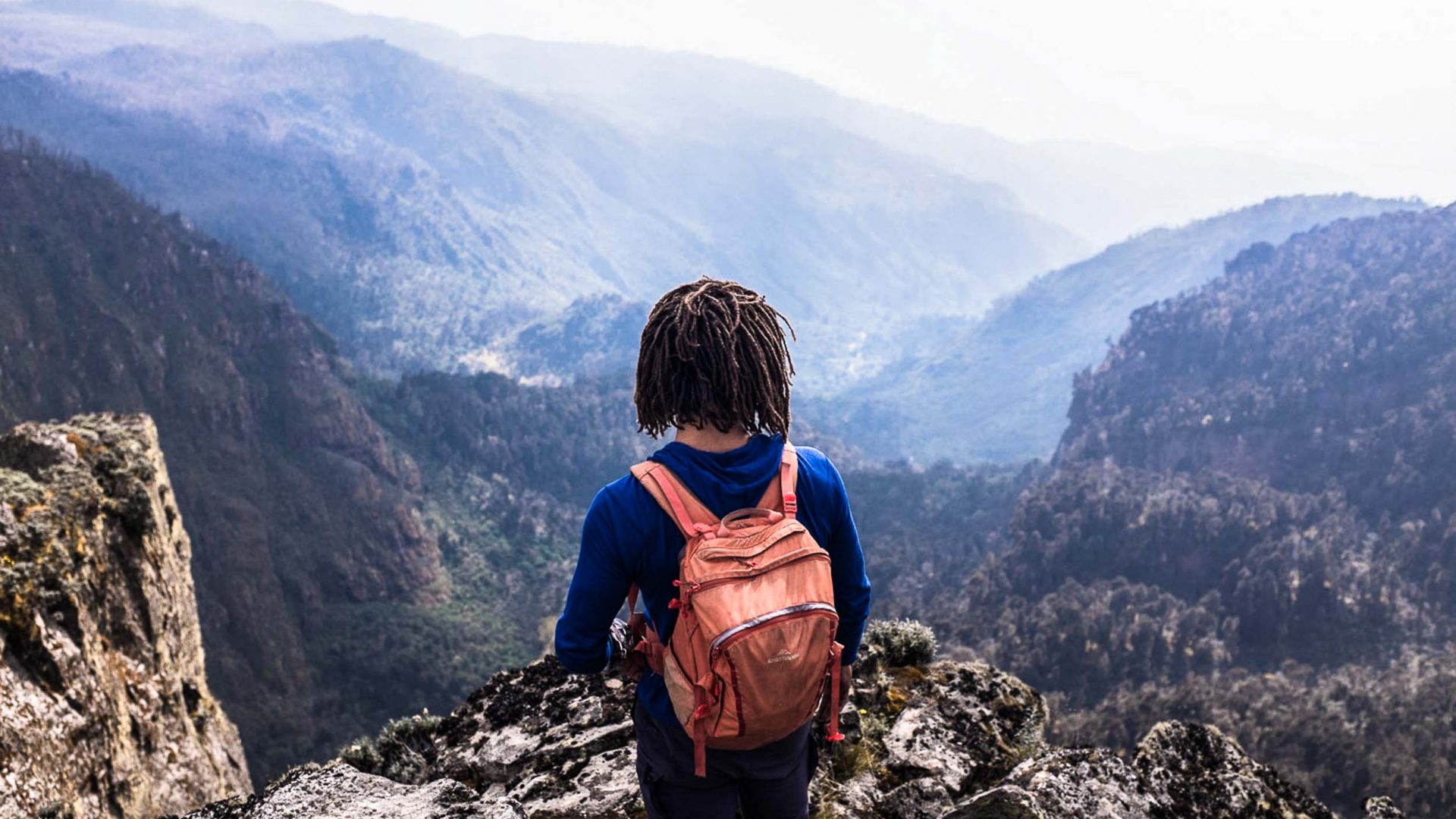Tayla Gentle journeyed into the Australian wilderness with expert fly fishing guide, Charley May, in search of a trout or two. She came back with a question: Why don’t more women take up this relaxing, tactical and restorative sport?
“My first piece of advice to you today: Don’t expect to catch a fish.”
I’m sitting on the banks of the Rubicon River under a canopy of gum leaves, somewhere about two hours east of Melbourne, watching fly fisher Charley May thread a tiny replica caddisfly onto her line with surgeon-like precision.
“No offense,” she says, without looking up from her intricate operation, “but the first time is never easy and you might walk away without catching much more than a tree branch. But if you’re disappointed by that, I kind of think you’re missing the point.”
I don’t say as much to Charley, but I’m confused. I thought the point was to catch a fish? Isn’t that why I’m wearing chest-high waders and neoprene boots? To snag myself a slippery brook trout?
RELATED: Fishing in Papua New Guinea’s ‘lake of monsters’
She ties the last knot with a finesse born of spending a decade on the water and hands me the rod. It’s taller than me when standing; featherlight and flexible. I awkwardly wave it around my head, like a new kid with their first wand at Hogwarts.
A spin fisherman walks past, a couple of trout flung over his shoulder and shouts, “Good on ya gals! It’s great to see ladies fly fishing, you don’t get that very often!” I marvel firstly at the fact that he believed I was a professional and secondly, at his surprise to see women on the fly.
History books can’t place the exact origins of fly fishing, but many experts credit the Macedonian anglers at the end of the second century with first taking to water. From there, the Japanese developed their own version of the sport called tenkara and the anglers in the United States evolved the use of artificial flies. What has prevailed throughout history, however, is the general notion that fishing is a man’s sport.
“I’m tired of the ‘boys gone fishing’ mentality; this outdated idea that fishing is for men who need a break from their nagging wives,” says Charley. “How about the wives? I know for a fact they’d probably love a day in the outdoors!”
We’re in the water now, having waded upstream 10 minutes to reach a closeted rock pool. I can see straight through the fresh water to my boots at the bottom. God, I love wearing waders.
Charley is passionate about changing the stats when it comes to equality on the water, and is in the midst of planning a women’s-only fishing retreat for the end of the year. “We’ve got a long way to go,” she says. “When I came to Australia, my first impression of women in fly fishing was: ‘Where are they?’ Women are kicking goals on football fields and scoring centuries on the wicket, but I’m yet to bump into another female fisher on the river.”
RELATED: Dame disruptors: Meet the women changing travel
As we cast, strip line in, cast, strip line in (Charley effortlessly, me … not so much), I learn more about a woman’s place in the fly fishing world. Take Charley’s home club, for example. The Victorian Fly Fishers Association was established in 1932, but it only began taking female members last year. Charley is in the process of becoming the third lady to join. While it sounds a bit backwards, Charley sees it as progress. “It’s not that all the men are Neanderthals,” she says. “No way. Most guys I’ve met around the world have been pretty progressive. It’s just the language needs a refresh. It needs to stop being such a fraternity. That’s why I love teaching women, because each new fisher is changing the status quo.”
I repeat my profound existential moment to Charley, who turns to me with a grin. “You’re bang on,” she says. “Fly fishing is great for your mental health—everyone could do with an afternoon out here. But don’t get too settled, I spy a few fishies up ahead.”
In what feels comical, but actually makes perfect hunting sense, Charley and I squat in the water and move slowly, and ever so quietly, upstream toward the school of trout. We are sneaking up on them from behind, using the surprise to our advantage.
“Whatever you do, don’t let them see you,” whispers Charley—my final marching order before she sends me further upriver on my lonesome. This is it. Will I catch my first ever fish?
Brook trout have a reputation for being a bit on the slow side, but the ones we stumbled upon were a particularly smart bunch. And while I may well have been able to reel one of the slippery suckers in myself, it was Charley’s experience (and excellent arrow cast) that eventually landed our catch.
Still, I felt euphoric. I’d been welcomed into the secret society of fly fishing, and it felt pretty special. There was no badge of honor or plaque of remembrance, but I did get a photo with my prize before removing the barbless hook and sending the little guy swimming back to his friends.
Because if I learned anything from my time on the fly with Charley, it’s that fishing is about so much more than just catching fish—it’s about letting go, too.
—-





